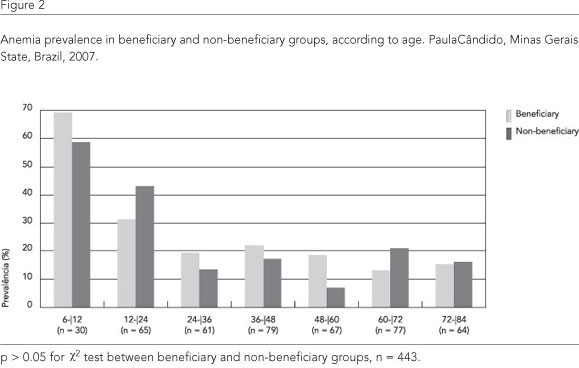This cross-sectional study aimed to identify the social and biological determinants of anemia in children enrolled in the Brazilian Income Transfer Program (PBF). The study evaluated 446 children (69.1% of the total enrolled) ranging from 6 to 84 months of age, of whom 262 were receiving the income transfer (60.2% of the beneficiaries) and 184 were not (87.6% of the non-beneficiaries). Testing for anemia was performed with the Hemocue portable hemoglobinometer, and the cutoff points were set at 11.0 and 11.5g/dL, according to age bracket. The data were analyzed using Poisson hierarchical regression with robust variance for multivariate analysis. There was no difference in the anemia prevalence rates between the beneficiary and non-beneficiary groups. Risk factors for anemia were low paternal schooling, cesarean birth, consumption of untreated water, stunting, and age less than 24 months. Prevalence of anemia in the group of non-beneficiary children under two years of age was significantly higher than in the beneficiary group in the same age bracket, suggesting the importance of the PBF income transfer for preventing anemia in children.
Anemia; Government Programs; Risk Factors; Income





